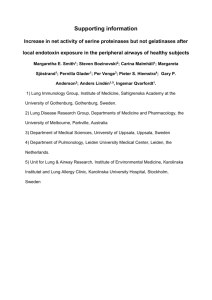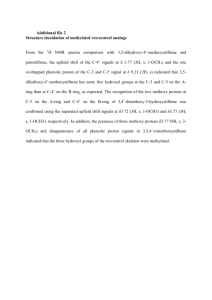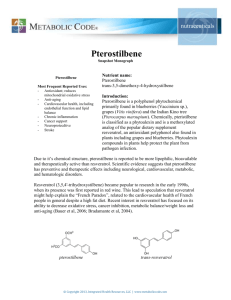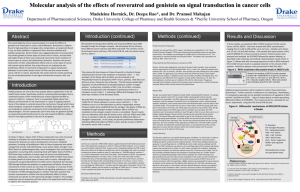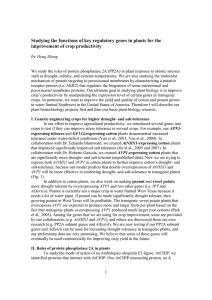Supplementary Figure Legends (doc 47K)
advertisement
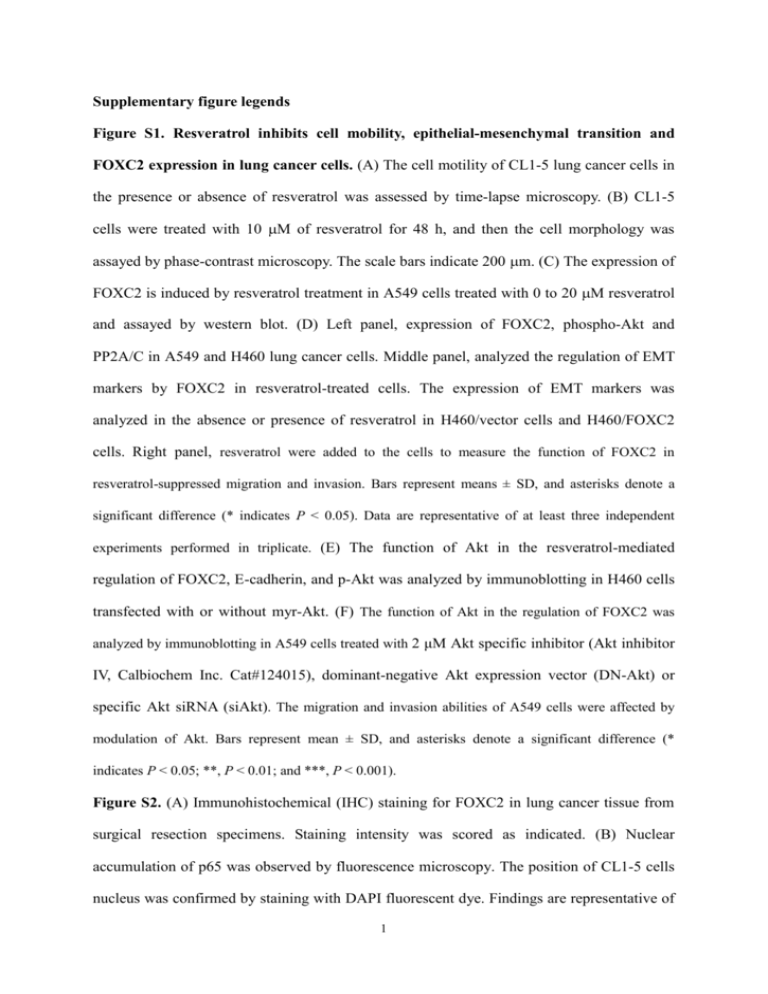
Supplementary figure legends Figure S1. Resveratrol inhibits cell mobility, epithelial-mesenchymal transition and FOXC2 expression in lung cancer cells. (A) The cell motility of CL1-5 lung cancer cells in the presence or absence of resveratrol was assessed by time-lapse microscopy. (B) CL1-5 cells were treated with 10 M of resveratrol for 48 h, and then the cell morphology was assayed by phase-contrast microscopy. The scale bars indicate 200 m. (C) The expression of FOXC2 is induced by resveratrol treatment in A549 cells treated with 0 to 20 M resveratrol and assayed by western blot. (D) Left panel, expression of FOXC2, phospho-Akt and PP2A/C in A549 and H460 lung cancer cells. Middle panel, analyzed the regulation of EMT markers by FOXC2 in resveratrol-treated cells. The expression of EMT markers was analyzed in the absence or presence of resveratrol in H460/vector cells and H460/FOXC2 cells. Right panel, resveratrol were added to the cells to measure the function of FOXC2 in resveratrol-suppressed migration and invasion. Bars represent means ± SD, and asterisks denote a significant difference (* indicates P < 0.05). Data are representative of at least three independent experiments performed in triplicate. (E) The function of Akt in the resveratrol-mediated regulation of FOXC2, E-cadherin, and p-Akt was analyzed by immunoblotting in H460 cells transfected with or without myr-Akt. (F) The function of Akt in the regulation of FOXC2 was analyzed by immunoblotting in A549 cells treated with 2 μM Akt specific inhibitor (Akt inhibitor IV, Calbiochem Inc. Cat#124015), dominant-negative Akt expression vector (DN-Akt) or specific Akt siRNA (siAkt). The migration and invasion abilities of A549 cells were affected by modulation of Akt. Bars represent mean ± SD, and asterisks denote a significant difference (* indicates P < 0.05; **, P < 0.01; and ***, P < 0.001). Figure S2. (A) Immunohistochemical (IHC) staining for FOXC2 in lung cancer tissue from surgical resection specimens. Staining intensity was scored as indicated. (B) Nuclear accumulation of p65 was observed by fluorescence microscopy. The position of CL1-5 cells nucleus was confirmed by staining with DAPI fluorescent dye. Findings are representative of 1 three independent experiments. Figure S3. Representative IHC images of PP2A/C in lung cancer tissue from surgical resection specimens. Staining intensity was scored as indicated. Figure S4. (A) The association between FOXC2 and PP2A/C in lung cancer patients is illustrated by representative IHC staining images of FOXC2 and PP2A/C in lung cancer tissues. Low and high expression levels of FOXC2 are shown. (B) A549 cells were infected with indicated concentrations of miR-520h by lentivirus system and the expression of PP2A/C protein and miR-520h performed by western blot and RT-qPCR assays, respectively. Bars represent mean ± SD, and asterisks denote a significant difference (* indicates P < 0.05; **, P < 0.01; and ***, P < 0.001). Figure S5. miR-520h is required for invasive phenotype. (A) the expression of miR-520h, FOXC2, PP2A/C and EMT markers in different lung cancer cell lines after antagomiR-520h treatment for 72 h was determined by western blot assay (upper panel) and RT-qPCR (lower panel). (B) transwell migration assay and Matrigel invasion assay of lung cancer cell lines transfected with antagomiR-520h or control inhibitor. Bars represent mean ± SD, and asterisks denote a significant difference (* indicates P < 0.05; **, P < 0.01). 2


